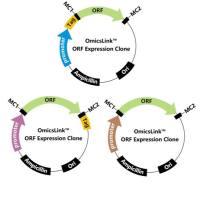Many experimental studies of epilepsy are based on rodent models induced by chemical or electrical insult as an instigator of seizures. Although such studies are useful in observing the physiological events that may occur during epileptogenesis, the great complexity of changes that ensue between first seizure and epilepsy makes it difficult to ascribe cause-and-effect to any single protein. In contrast, spontaneous mutations or mutations using gene targeting in mice provide a unique opportunity to evaluate a single protein, at cellular to whole organism level, for its role in epilepsy. Such approaches have uncovered a number of genes, some expected and others unexpected, which may provide novel targets for further study and drug design.
Recently, the large conductance voltage and calcium-activated potassium channel (BK channel) gene and their accessory subunits have been appended to the list of mutations causing epilepsy in humans and mice. BK channels have the specialized role of sharpening action potentials in many excitatory neurons. Surprisingly, functional analysis in heterologous expression systems indicates that some of these mutations are gain of function. This paradoxical effect of an increased BK potassium current correlating with increased excitability and seizures belies simplistic assumptions of the role of potassium channels in reducing excitability of neurons. In this review we explore genetic studies to understand how BK channel gain of function may have pro-epileptic effects. An important conclusion that may be drawn is that BK channel sharpening of action potentials may preclude recruitment of other potassium currents that otherwise reduce excitability. Accessory β subunits that either confer inactivation or slow BK channels activation are able to limit these effects. These findings suggest that BK channels and their interplay with other ion currents must be tightly regulated to serve appropriate function in neurons. Gain-of-function mutations or maladaptive changes during epilepsy may re-tailor these channels to support high-frequency action potential firing.






